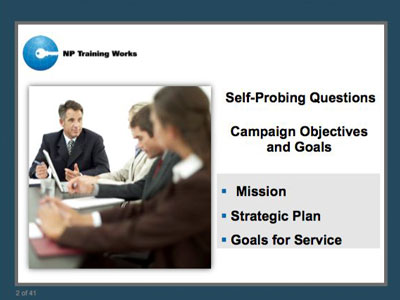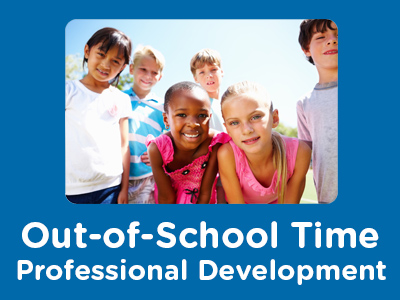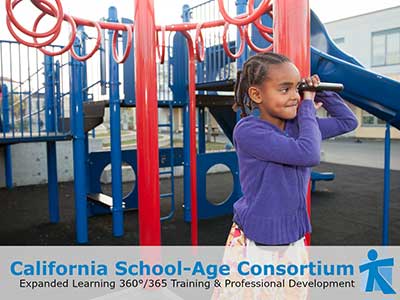 |
Brick by Brick: Difficult Deliveries |
1.00 |
Assisting a mother with a complicated childbirth is one of the most challenging situations an EMS provider may encounter in their career. Our team of experts discuss the prehospital management of postpartum hemorrhage, prolapsed cord, shoulder dystocia, and breech birth. Doctors Kristen E. Burhans, Maia Dorsett, and Kara Louise LaBarge demonstrate skills that you will want to practice with your response team before your next obstetrical emergency occurs. |
 |
Art of the Capital Campaign |
1.00 |
As you learn how to plan, operate and conduct a capital campaign you can find a lot of advice on the science of fundraising. Often, however, your success will depend more on the Art of the Practitioner (you) than the rules of the game. This Webinar is designed to help you become a capital campaign artist by giving you a roadmap to travel from pre-campaign, feasibility, planning, infrastructure, phases and post-campaign wrap-up. You’ll learn the pitfalls to avoid and important tasks to accomplish to become a capital campaign impresario. You’ll learn the tools to help you enjoy the ride. |
 |
Involving School-Age Children in Activity Planning and Implementation |
2.00 |
As they grow and change and move toward independence, school-age children and youth become very interested in planning and directing their own activities. This means it’s very important for staff to think of ways to involve them in program planning and implementation. By planning activities WITH children instead of FOR them, and engaging them in creating the program environment, staff can help children develop a feeling of ownership of the program—a positive feeling that the program belongs to them." |
 |
Course 19: Involving School-Age Children in Activity Planning and Implementation |
2.00 |
As they grow and change and move toward independence, school-age children and youth become very interested in planning and directing their own activities. This means it’s very important for staff to think of ways to involve them in program planning and implementation. By planning activities WITH children instead of FOR them and engaging them in creating the program environment, staff can help children develop a feeling of ownership of the program – a positive feeling that the program belongs to them. |
 |
We Are: Supporting Self-Awareness and Self-Management |
0.75 |
As staff, our understanding of how youth’s negative responses affect emotions and behaviors is a key lever in how we create opportunities for young people to develop social-emotional and character skills such as self-awareness and self-management. During this course, participants will learn about how young people’s responses affect personal emotion and behavior, and how group agreements can support safe environments. Participants will reflect on current strategies and will learn about resources to support the development of young people’s self-awareness and self-management skills. |
 |
Geriatric Assessment |
1.25 |
As part of an interdisciplinary team working with older adults, it is important to understand the different parts that make up a comprehensive geriatric assessment. This course will provide you with information about the tools used in a comprehensive geriatric assessment that are chosen based on identified needs and areas of concern for individual patients. |
 |
Leading Teams and Organizations with Head and Heart |
2.00 |
As leaders, we must ensure that we are not only modeling social-emotional and character skills ourselves, but creating program environments for staff to thrive in these areas. Organizations can intentionally embrace and uphold practices that create safe environments for staff to develop and hone such skills individually and collectively, especially amongst change. In this course, participants will understand three stages of change, and how staff experience each. Participants will also become familiar with adaptive leadership strategies for managing change within organizations. |
 |
STEM and You |
1.00 |
As early childhood professionals, we’ve all heard the term STEM. It stands for Science, Technology, Engineering, and Mathematics. But do you think you would recognize STEM in action if you saw it? Let’s find out!
Course Learning Objectives:
- Define STEM in the context of early childhood education.
- Recognize the impact of a teacher’s attitude toward STEM on their instructional practice. |
 |
Cultural Competency for Children and Families (CDA 4) |
2.00 |
As classrooms and communities reflect our increasingly interconnected world, cultural understanding becomes essential for educators. This course equips you with the knowledge and tools to navigate the spectrum of cultural awareness, sensitivity, responsiveness, and competence. Together, we'll explore impactful practices for fostering inclusive environments and culturally competent approaches that empower children and families. |
 |
Stress First Aid for Long-Term Care Staff |
1.00 |
As an essential worker during a pandemic, your work stress is accompanied by the stressors in your personal life, as well as concerns about your family’s health. As staff in a long-term care facility, you also have the stress of caring for vulnerable individuals with serious medical and cognitive issues who may be reacting poorly to extended social isolation. This is unprecedented in long-term care, and it requires ongoing, effective stress management. Stress First Aid offers a flexible framework of tools for addressing stress reactions that can hopefully reduce the likelihood that these reactions will develop into more severe or long-term problems. |











